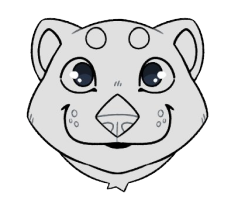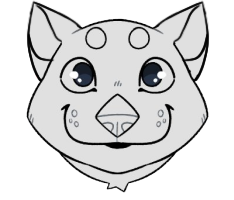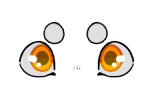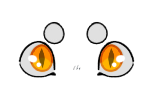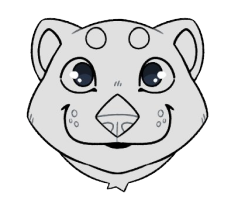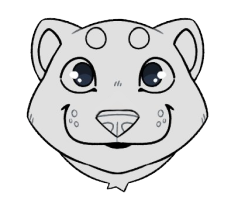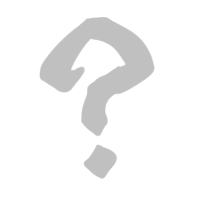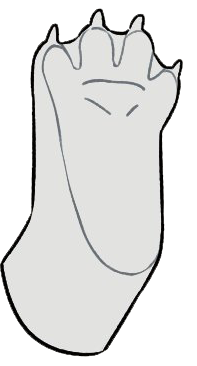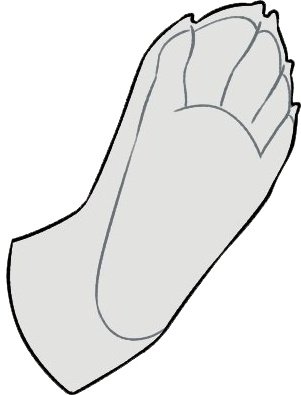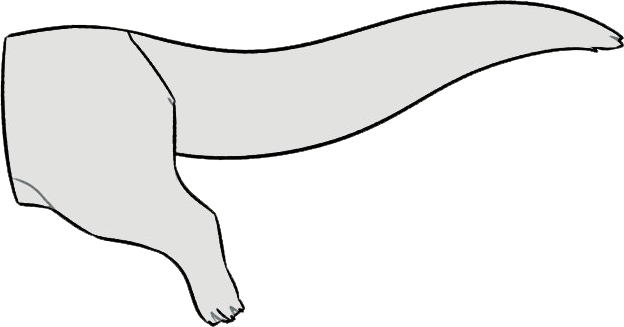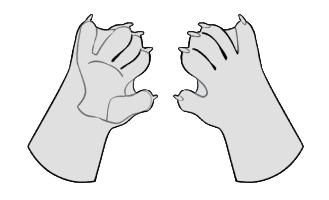Traits
Rounded Ears (Common)
Rounded Ears have soft, circular tips, just like a river otter's.
How to apply this trait:
- These ears can be up to 25% the size of the ottagi's head.
- They should be depicted as small and rounded, not pointed or excessively large, unless combined with large ears.
Pointy Ears (Common)
Pointy Ears come to a sharper point, similar to sea otters or cats.
How to apply this trait:
- These ears can be up to 25% the size of the ottagi's head.
- They should be depicted as small and pointed, not rounded or excessively large, unless combined with large ears.
Round Eyes (Common)
Classic eyes with a rounded iris/pupil.
How to apply this trait:
- Sclera must be present and white/off-white, unless you also add colored sclera.
- Iris and/or pupil must be present and round, and can be any color (including gradients/rainbow).
- Both eyes must match, unless you also add mismatched eyes + another eye trait.
Slit Eyes (Common)
Classic eyes with slit pupils, usually better for seeing in the dark!
How to apply this trait:
- Sclera must be present and white/off-white, unless you also add colored sclera.
- Iris and/or pupil must be present and vertical slits, and can be any color (including gradients/rainbow).
- Both eyes must match, unless you also add mismatched eyes + another eye trait.
Diamond Nose (Common)
A prominent nosepad shaped like a diamond, like a sea otter!
How to apply this trait:
- The nosepad should be prominent and clearly diamond-shaped, not a small dot or pinprick.
- It should be proportional to the ottagi's face and not appear excessively small.
Anvil Nose (Common)
A prominent nosepad that's more triangular in shape, like the river otter!
How to apply this trait:
- The nosepad should be prominent and triangular or trapezoidal, not a small dot or pinprick.
- It should be proportional to the ottagi's face and not appear excessively small.
Short Coat (Common)
A short, sleek fur coat that's well-suited for aquatic environments.
How to apply this trait:
- The fur should remain relatively short in length, giving the ottagi a smooth, streamlined appearance.
- Stylized tufts can be added to give the coat a fluffier appearance, but the overall length must be kept in check!
- If the fur is long enough to be very shaggy or fluffy throughout the body, it would be considered a long coat.
- Areas with fluff that is long enough to be considered a separate accent can be applied with accent fluff.
Pawed Feet (Common)
Pawed Feet have back feet that are paws, much like a cat or dog.
How to apply this trait:
- The back paws should be similar in form and function to the front paws.
- They should feature clawed, webbed digits. Webbing should be shown if the toes are spread out.
Flipper Feet (Common)
Hind feet that are shaped like flippers, like sea otters and seals have!
How to apply this trait:
- The back feet should be noticeably flipper-like, with claws, webbing, and a streamlined shape.
Taper Tail (Common)
A classic otter tail with a thick base that tapers to a point.
How to apply this trait:
- The tail's shape should be thick at the base and gradually narrow to a point.
- The tail should be between 75% and 100% the length of the ottagi's body, unless combined with long tail.
Short Claws (Common)
Short, retractable claws that are common for most ottagi.
How to apply this trait:
- The claws should be short and subtle, not protruding noticeably from the paws when retracted.
- This trait applies to all claws on both the hands and feet.

